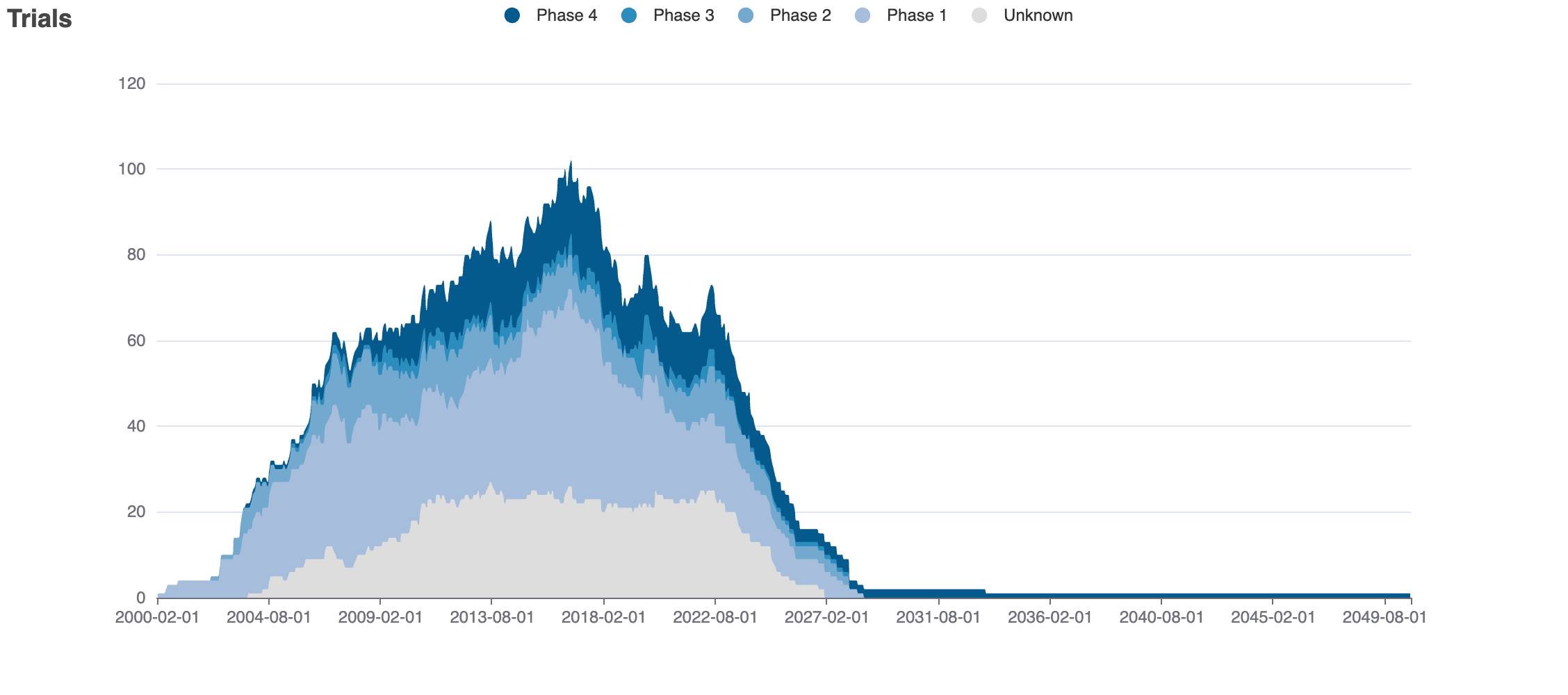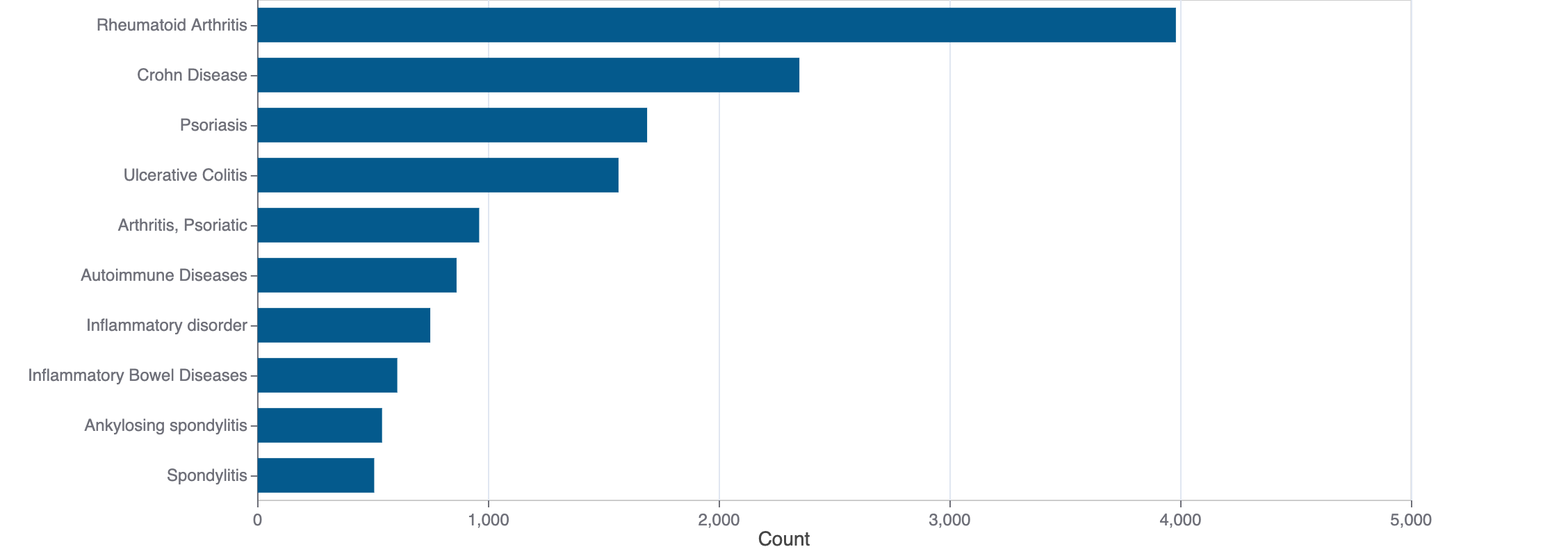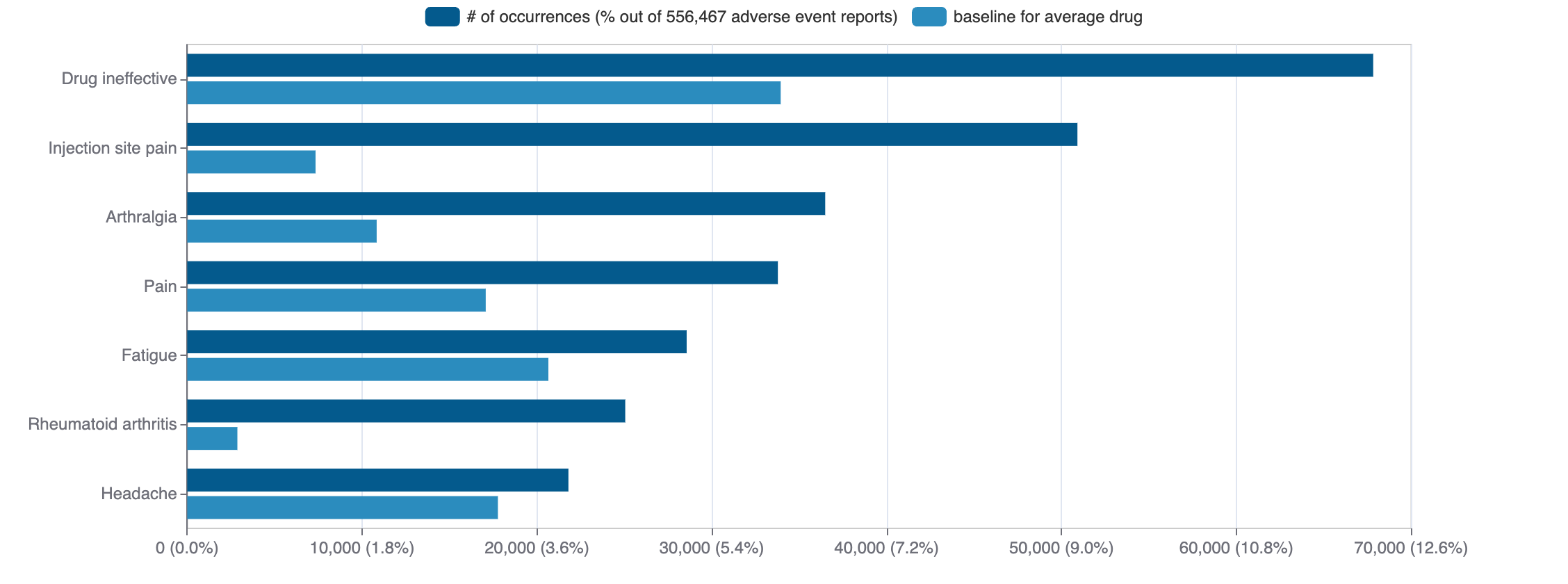Relistor(methylnaltrexone bromide)
Relistor (methylnaltrexone bromide) is a small molecule pharmaceutical. Methylnaltrexone bromide was first approved as Relistor on 2008-04-24. It is used to treat constipation in the USA. It has been approved in Europe to treat constipation and opioid-related disorders. The pharmaceutical is active against mu-type opioid receptor. In addition, it is known to target delta-type opioid receptor and kappa-type opioid receptor.
Download report
Favorite
Commercial
Trade Name
FDA
EMA
Relistor
Drug Products
FDA
EMA
New Drug Application (NDA)
New Drug Application (NDA)
Abbreviated New Drug Application (ANDA)
Abbreviated New Drug Application (ANDA)
Labels
FDA
EMA
Brand Name | Status | Last Update |
|---|---|---|
| relistor | New Drug Application, NDA authorized generic | 2020-04-01 |
Indications
FDA
EMA
Indication | Ontology | MeSH | ICD-10 |
|---|---|---|---|
| constipation | HP_0002019 | D003248 | K59.0 |
Agency Specific
FDA
EMA
No data
Patent Expiration
Patent | Expires | Flag | FDA Information |
|---|---|---|---|
| Methylnaltrexone Bromide, Relistor, Salix | |||
| 8524276 | 2031-03-10 | DP | |
| 8956651 | 2031-03-10 | DP | |
| 9314461 | 2031-03-10 | DP | |
| 10307417 | 2031-03-10 | DP | |
| 10376505 | 2031-03-10 | DP | |
| 8420663 | 2029-09-30 | U-1185 | |
| 9180125 | 2029-09-30 | DP | U-1185 |
| 9492445 | 2029-09-30 | DP | U-1185 |
| 9724343 | 2029-09-30 | DP | U-1185 |
| Methylnaltrexone Bromide, Relistor, Salix Pharms | |||
| 8247425 | 2030-12-31 | U-1185 | |
| 8822490 | 2029-09-30 | DP | U-1185 |
| 8552025 | 2024-04-08 | DP | |
| 9669096 | 2024-04-08 | DP | |
| 10376584 | 2024-04-08 | DP | U-1185 |
HCPCS
No data
Clinical
Clinical Trials
66 clinical trials
View more details

Mock data
Subscribe for the real data
Subscribe for the real data
Indications Phases 4
Indication | MeSH | Ontology | ICD-10 | Ph 1 | Ph 2 | Ph 3 | Ph 4 | Other | Total |
|---|---|---|---|---|---|---|---|---|---|
| Constipation | D003248 | HP_0002019 | K59.0 | 2 | 4 | 4 | 3 | 1 | 14 |
| Opioid-induced constipation | D000079689 | — | 2 | 3 | 3 | 1 | 8 | ||
| St elevation myocardial infarction | D000072657 | — | — | — | 1 | — | 1 | ||
| Coronary artery disease | D003324 | I25.1 | — | — | — | 1 | — | 1 |
Indications Phases 3
Indication | MeSH | Ontology | ICD-10 | Ph 1 | Ph 2 | Ph 3 | Ph 4 | Other | Total |
|---|---|---|---|---|---|---|---|---|---|
| Pancreatic neoplasms | D010190 | EFO_0003860 | C25 | — | 1 | 2 | — | — | 2 |
| Ileus | D045823 | K56.7 | — | — | 1 | — | — | 1 | |
| Pancreatitis | D010195 | EFO_0000278 | K85 | — | 1 | 1 | — | — | 1 |
| Enteral nutrition | D004750 | — | — | 1 | — | — | 1 |
Indications Phases 2
Indication | MeSH | Ontology | ICD-10 | Ph 1 | Ph 2 | Ph 3 | Ph 4 | Other | Total |
|---|---|---|---|---|---|---|---|---|---|
| Healthy volunteers/patients | — | 8 | 1 | — | — | — | 9 | ||
| Gastroparesis | D018589 | EFO_1000948 | K31.84 | — | 1 | — | — | — | 1 |
| Neoplasms | D009369 | C80 | — | 1 | — | — | — | 1 | |
| Opioid-related disorders | D009293 | EFO_0005611 | F11 | — | 1 | — | — | — | 1 |
Indications Phases 1
Indication | MeSH | Ontology | ICD-10 | Ph 1 | Ph 2 | Ph 3 | Ph 4 | Other | Total |
|---|---|---|---|---|---|---|---|---|---|
| Intestinal obstruction | D007415 | K56.60 | 2 | — | — | — | — | 2 | |
| Liver diseases | D008107 | EFO_0001421 | K70-K77 | 1 | — | — | — | — | 1 |
| Renal insufficiency | D051437 | HP_0000083 | N19 | 1 | — | — | — | — | 1 |
| Postoperative complications | D011183 | 1 | — | — | — | — | 1 |
Indications Without Phase
Indication | MeSH | Ontology | ICD-10 | Ph 1 | Ph 2 | Ph 3 | Ph 4 | Other | Total |
|---|---|---|---|---|---|---|---|---|---|
| Chronic pain | D059350 | HP_0012532 | — | — | — | — | 1 | 1 |
Epidemiology
Epidemiological information for investigational and approved indications
View more details
Drug
General
| Drug common name | METHYLNALTREXONE BROMIDE |
| INN | methylnaltrexone bromide |
| Description | Methylnaltrexone (MNTX, brand name Relistor), used in form of methylnaltrexone bromide (INN, USAN, BAN), is a medication that acts as a peripherally acting μ-opioid receptor antagonist that acts to reverse some of the side effects of opioid drugs such as constipation without significantly affecting pain relief or precipitating withdrawals. Because MNTX is a quaternary ammonium cation, it cannot cross the blood–brain barrier, and so has antagonist effects throughout the body, counteracting effects such as itching and constipation, but without affecting opioid effects in the brain such as pain relief. However, since a significant fraction (up to 60%) of opioid analgesia can be mediated by opioid receptors on peripheral sensory neurons, particularly in inflammatory conditions such as arthritis, traumatic or surgical pain, MNTX may increase pain under such circumstances.
|
| Classification | Small molecule |
| Drug class | narcotic agonists/antagonists (normorphine type) |
| Image (chem structure or protein) | |
| Structure (InChI/SMILES or Protein Sequence) | C[N+]1(CC2CC2)CC[C@]23c4c5ccc(O)c4O[C@H]2C(=O)CC[C@@]3(O)[C@H]1C5.[Br-] |
Identifiers
| PDB | — |
| CAS-ID | 73232-52-7 |
| RxCUI | — |
| ChEMBL ID | CHEMBL1201770 |
| ChEBI ID | — |
| PubChem CID | 5361917 |
| DrugBank | DB06800 |
| UNII ID | RFO6IL3D3M (ChemIDplus, GSRS) |
Target
Variants
Clinical Variant
No data
Financial
No data
Trends
PubMed Central
Top Terms for Disease or Syndrome:

Mock data
Subscribe for the real data
Subscribe for the real data
Additional graphs summarizing 140 documents
View more details
Safety
Black-box Warning
No Black-box warning
Adverse Events
Top Adverse Reactions

Mock data
Subscribe for the real data
Subscribe for the real data
24,375 adverse events reported
View more details
Premium feature
Learn more about premium features at pharmakb.com
Learn more
